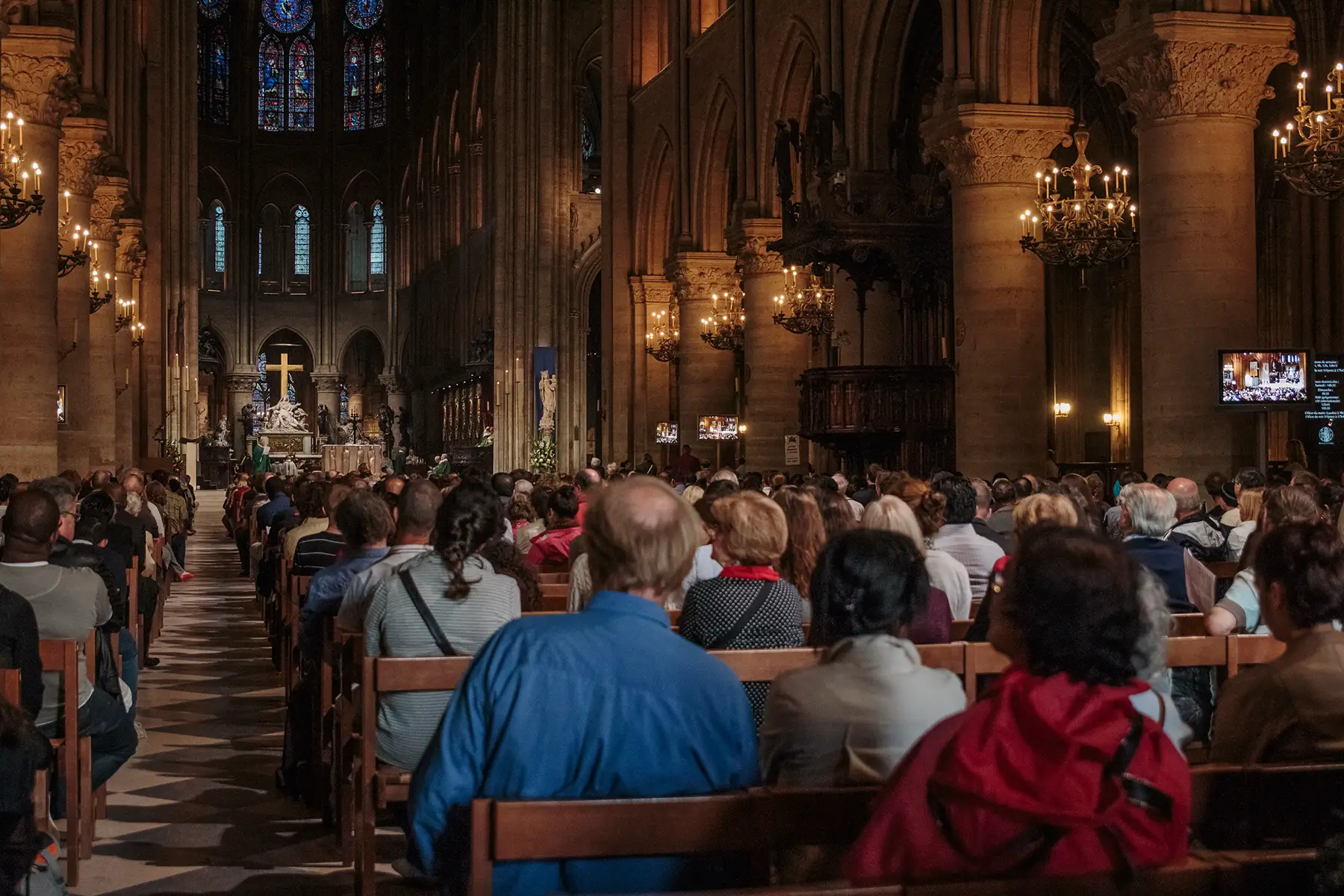Looking forward to your first Christmas – or Noël as the French call it – in France? There’s no better way to join the festivities in your new home than by adopting a few French customs for the season. You can expect an array of delicious French foods and sweets, plus some familiar classics like mistletoe and Father Christmas.
Here are 10 Christmas traditions to add to your festive celebrations in France:
1. Advent
The Advent season is the four weeks leading up to Christmas, intended to get French children excited for the holiday season.
Advent usually begins officially on 1st December when children open the first “window/door” of their calendriers de l’Avent (Advent calendars). These are a popular tradition in France, as in other countries, where each day of the calendar offers a treat like chocolate, candy, or a small toy, until Christmas Eve.

In recent years, more elaborate versions with beauty products, teas, or artisanal goods have gained popularity among adults. The Advent season is also marked by decorations, Christmas markets, and a sense of festive excitement throughout the country.
2. Sapin de Noël (Christmas tree)
The Christmas tree, or sapin de Noël, is a beloved tradition in France, symbolizing the festive spirit of the holiday season. Decorated with ornaments, lights, and tinsel, it serves as the centerpiece of many French homes during Christmas.
This custom is thought to have originated in Alsace in the 16th century, where evergreen trees were adorned with apples, sweets, and candles. Today, both real and artificial trees are popular, and decorations often include touches of French flair, like handcrafted ornaments or natural elements.
The tree is typically put up in the first week or so of December and stays until Epiphany (6th January), spanning the Christmas and New Year celebrations.
3. Marché de Noël (Christmas markets)
While they may not be exclusively a French tradition, Christmas markets, or marchés de Noël, are serious business in France, transforming towns and cities into festive wonderlands.
You can find French Christmas across the country, offering a magical atmosphere with wooden chalets selling handcrafted gifts, ornaments, and regional specialties. Visitors can enjoy treats like mulled wine, gingerbread, roasted chestnuts, and more.
It’s worth noting that Christkindelsmärik (“Market of the Christ Child”) in Strasbourg is the most famous Christmas market in France and one of the oldest in all of Europe.
4. Crèches de Noël (nativity scenes)
Crèches de Noël (nativity scenes) are central to Christmas traditions in France, especially in the southern region of Provence.

What makes French Nativity scenes unique is the inclusion of santons (“little saints”), small hand-painted clay figurines that represent not only the biblical characters but also everyday villagers and tradespeople, such as bakers, farmers, and fishermen. Crafting santons is a centuries-old art, with figures often made by artisans using molds passed down through generations.
The crèche is displayed in homes, churches, and public spaces, usually starting on December 8th (the Feast of the Immaculate Conception) and remains until early January. Many families expand their collection of santons each year, and during the Advent season, Provence even hosts santons fairs.
5. Les papillottes
Les papillottes are a fun take on dessert at French Christmas time. They’re chocolates wrapped in festive, shiny paper with notes inside, usually containing jokes or riddles. Sometimes they’re made of candied fruit – another beloved traditional French Christmas treat.
Les papillottes started out in Lyon in the 18th century, and now they’re sold massively in shops at the end of each year. They usually decorate the table to be opened and eaten after the Christmas feast is finished.
6. Le réveillon de Noël, the Christmas Eve feast
The evening of December 24th is when French families sit down together for le réveillon, the main Christmas meal. For many families, it’s the most important Christmas tradition, and a great time to enjoy festive French foods and wines.

Good quality food and wine is the cornerstone of a traditional Christmas in France. What’s served at le réveillon varies by region, but generally you can expect the following:
- Appetizer: foie gras, smoked salmon, and oysters with bran bread and butter
- Main course: roast capon or turkey stuffed with chestnuts, and even venison or wild boar in some regions. Coastal France might serve a seafood platter of lobster, shrimp, and scallops.
- Side dishes: Vegetables such as green beans cooked with garlic butter and herbs de Provence sautéed potatoes
- Drinks: champagne and either red or white French wine, depending on the dishes served
The tradition’s name comes from the verb réveiller meaning “to wake up or revive”. If you’ve heard about French people eating long and slowly, this dinner is the greatest example of this French custom. This feast can go for up to six hours.
7. La bûche de Noël (yule log)
To finish off the Christmas Eve in France, you’re treated to la bûche de Noël, a sponge cake decorated like a yule log. Traditionally flavored with chocolate and chestnuts, and a buttercream frosting, this French Christmas dessert is as decadent as it is extravagant.

But beyond the traditional, there are also so many different types and flavors available from pastry shops around France. If you prefer a fruit-flavored yule log, you can find raspberry or passion fruit mousse, sometimes even made out of ice cream. If you can’t decide, there are small versions available so you can serve an assortment at your Christmas feast.
8. Le Père Noël (Father Christmas)
French children eagerly await Le Père Noël, or Father Christmas, who brings gifts for them to open. He usually delivers the presents for Christmas morning, but some families also open gifts on Christmas Eve. Typically depicted as a jolly man in a red suit, Père Noël is essentially the same as Santa Claus in other cultures.
French children often leave their shoes by the fireplace, which Père Noël fills with treats, toys, and small gifts. In some regions, he is accompanied by Le Père Fouettard, a more somber figure who reminds children to behave. However, this is quite an old tradition and no longer common in most parts of France.
9. Messe de minuit (midnight mass)
Although it’s decreasing in popularity, midnight mass is still considered a Christmas Eve tradition in France. Held in churches of all sizes around the country, midnight mass often features Christmas-specific hymns, gospel readings, and nativity plays. There are also regional differences, such as the tradition of the Pascal, a ceremonial candle lit during the service in Provence.
In France, this tradition is as much about community as it is about religion. Many families return home after the service to begin le réveillon, the Christmas Eve feast.
10. Mistletoe
Mistletoe, known as gui in French, holds a special place in the country’s Christmas traditions and folklore. First, mistletoe is considered a symbol of luck and prosperity. The French hang it in their homes during the holiday season to bring good fortune for the coming year.

Back in Pagan times, mistletoe was believed to have magical properties. It offered protection against evil spirits and brought good health and fertility.
And as you might expect, of course French people love to kiss under the mistletoe at Christmas parties.






